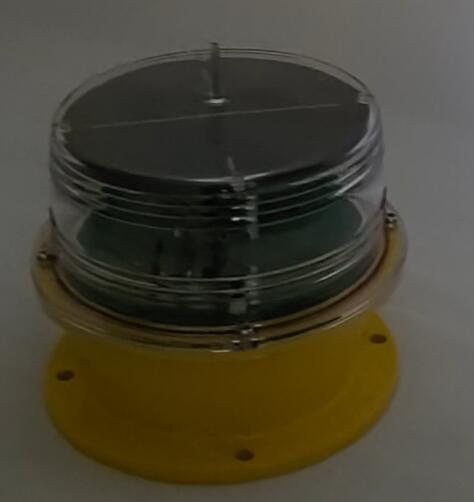Harnessing Innovation: The Impact of Solar Marine Light on Modern Navigation
Efficient and sustainable lighting solutions are vital in the maritime world, where safety and functionality often depend on visibility. The solar marine light, a cutting-edge innovation, has rapidly gained prominence as a reliable and eco-friendly alternative to conventional marine lighting systems. By leveraging renewable energy, these lights are transforming navigation, safety, and environmental conservation efforts across marine industries.
The Essence of Solar Marine Light
A solar marine light is a self-contained illumination device powered by solar energy. It integrates solar panels, energy storage systems, and LED technology to provide dependable lighting. These systems are specifically designed to withstand the harsh maritime environment, making them indispensable for a variety of applications such as marking buoys, docks, and navigation routes.

Unlike traditional lighting solutions, solar marine lights operate independently of external power sources, significantly reducing energy costs and dependency on fossil fuels. This autonomy ensures functionality even in remote or off-grid locations, further enhancing their appeal in diverse marine settings.
Advancing Maritime Safety
The primary purpose of solar marine light is to enhance safety on the water. Whether used for marking shipping lanes, highlighting obstacles, or illuminating ports, these lights provide clear, consistent visibility, reducing the risk of accidents and collisions. The use of high-intensity LEDs ensures that the light remains visible over long distances, even in adverse weather conditions.
| Solar Marine Light |
| Solar Marine Lights |
Many solar marine lights are equipped with programmable flash patterns and color-coded LEDs, allowing operators to customize them according to specific navigational requirements. These features enhance clarity and ensure compliance with international maritime standards, making them essential tools for maintaining order and safety on busy waterways.
Cost-Effective and Low Maintenance
The cost benefits of solar marine light systems are significant. By utilizing solar energy, these lights eliminate the need for expensive fuel or grid electricity. The initial investment is quickly offset by the savings in operational costs and the extended lifespan of the devices.
Moreover, solar marine lights are designed with durability in mind. Constructed from corrosion-resistant materials and equipped with robust components, they can endure prolonged exposure to saltwater, wind, and extreme temperatures. Their low maintenance requirements further reduce operational burdens, making them an attractive option for maritime operators.
Environmental Stewardship
The shift to solar marine light systems reflects a broader commitment to environmental sustainability. Traditional marine lighting solutions often rely on energy sources that contribute to greenhouse gas emissions and pollution. In contrast, solar-powered systems generate clean, renewable energy, aligning with global efforts to combat climate change.
Additionally, manufacturers of solar marine lights are increasingly prioritizing eco-friendly materials and production processes. This commitment minimizes waste and reduces the ecological footprint of maritime operations, contributing to the preservation of marine ecosystems.
Versatility Across Applications
Solar marine lights are versatile, finding applications in a wide range of maritime contexts:
Buoys and Navigational Aids: These lights mark channels, hazards, and safe zones, guiding vessels with precision.
Ports and Harbors: Solar marine lights illuminate piers, docks, and loading zones, ensuring smooth and safe operations.
Aquaculture and Fisheries: They delineate fishing zones and protect equipment, supporting sustainable practices.
Offshore Installations: Deployed on platforms, wind turbines, and other offshore structures, these lights enhance visibility and safety.
Emergency and Rescue Operations: Their portability and reliability make solar marine lights invaluable in disaster response scenarios.
Innovations Driving Efficiency
The evolution of solar marine light technology continues to deliver enhancements in efficiency and performance. Advances in solar panel efficiency and battery storage enable these lights to operate for extended periods, even during overcast weather or long winters. Some models now feature motion sensors and adaptive brightness, optimizing energy use based on environmental conditions.
Integration with smart technologies is another emerging trend. Remote monitoring systems allow operators to track the status of solar marine lights in real time, identify maintenance needs, and adjust settings remotely. This connectivity streamlines operations and ensures optimal performance, even in challenging environments.
Challenges and Future Prospects
Despite their numerous advantages, solar marine lights face challenges such as initial installation costs and performance limitations in areas with minimal sunlight. However, ongoing research and development efforts are addressing these issues by improving efficiency and reducing manufacturing costs.
The future of solar marine light systems looks promising as the maritime industry increasingly prioritizes sustainable and innovative solutions. With continued advancements in technology and growing awareness of environmental conservation, these lights are poised to become a standard feature in maritime operations worldwide.
Solar marine light systems represent a significant leap forward in maritime illumination. Their ability to provide reliable, cost-effective, and environmentally friendly lighting solutions makes them indispensable in modern navigation and safety practices. By embracing these technologies, maritime operators can enhance operational efficiency, reduce their environmental impact, and contribute to a safer and more sustainable future for the world’s waterways.
As solar marine light technology continues to evolve, its influence will undoubtedly extend further, illuminating not just the seas but also the path toward innovation and sustainability in the maritime industry.
